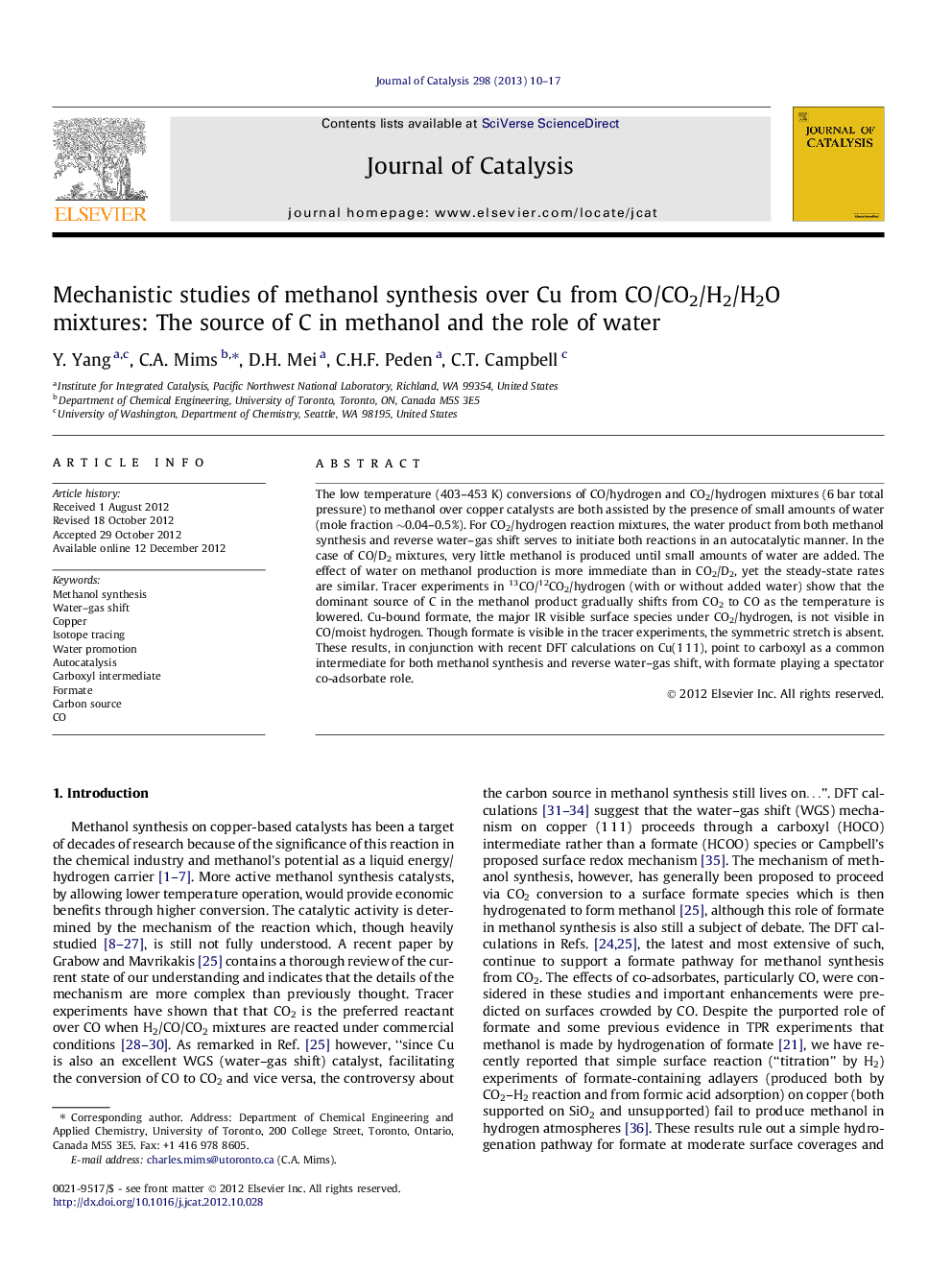| Article ID | Journal | Published Year | Pages | File Type |
|---|---|---|---|---|
| 61302 | Journal of Catalysis | 2013 | 8 Pages |
The low temperature (403–453 K) conversions of CO/hydrogen and CO2/hydrogen mixtures (6 bar total pressure) to methanol over copper catalysts are both assisted by the presence of small amounts of water (mole fraction ∼0.04–0.5%). For CO2/hydrogen reaction mixtures, the water product from both methanol synthesis and reverse water–gas shift serves to initiate both reactions in an autocatalytic manner. In the case of CO/D2 mixtures, very little methanol is produced until small amounts of water are added. The effect of water on methanol production is more immediate than in CO2/D2, yet the steady-state rates are similar. Tracer experiments in 13CO/12CO2/hydrogen (with or without added water) show that the dominant source of C in the methanol product gradually shifts from CO2 to CO as the temperature is lowered. Cu-bound formate, the major IR visible surface species under CO2/hydrogen, is not visible in CO/moist hydrogen. Though formate is visible in the tracer experiments, the symmetric stretch is absent. These results, in conjunction with recent DFT calculations on Cu(1 1 1), point to carboxyl as a common intermediate for both methanol synthesis and reverse water–gas shift, with formate playing a spectator co-adsorbate role.
Graphical abstractLow temperature (<450 K) transient kinetics and isotope tracing experiments reveal a significant role for water in both methanol synthesis and the reverse water–gas shift mechanism on copper catalysts. These results and recent DFT calculations point to a common carboxyl intermediate for both reactions.Figure optionsDownload full-size imageDownload high-quality image (59 K)Download as PowerPoint slideHighlights► A common carboxyl intermediate is implicated in methanol formation from CO and CO2. ► Water and water-derived species are critical reactants and co-reactants in both WGS and methanol synthesis on copper. ► The preferred carbon source for the reaction changes from CO2 to CO as temperature is lowered.
